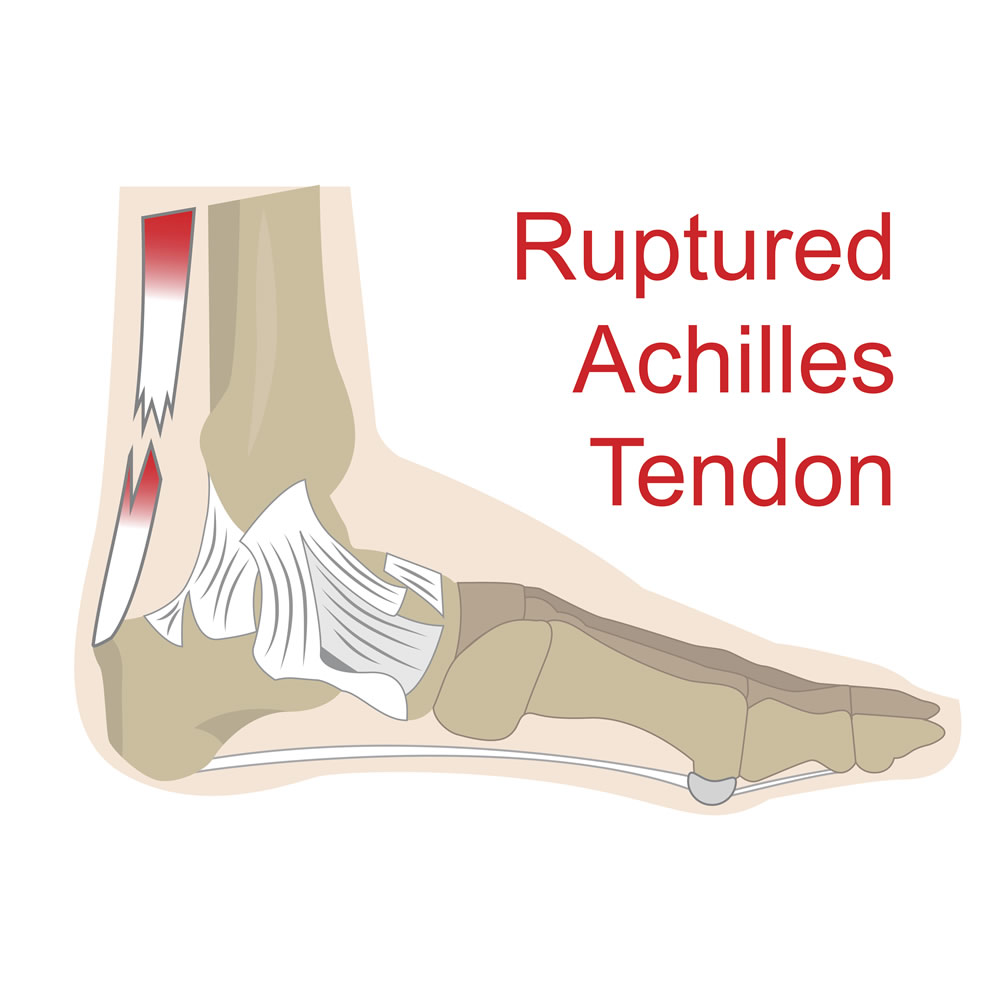Tendoachilles Tear
Tendoachilles tear is a break in the achilles tendon, situated at the backside of the ankle. A snap or pop may be heard at the moment of the tear.

Causes
The Achilles tendon is a strong cord, which does not rupture easily; however, in conditions like sudden trauma by twisting or turning, intense sport overuse, etc.
Landing awkwardly on the ankle after a jump is most common cause of tendoachilles tear.
Some antibiotics like levofloxacin and fluoroquinolones also contribute to the risk factors.
The risk is higher in old age people than 60 yrs, and also consuming corticosteroids or having kidney disease.
Symptoms
- Severe pain in the heel
- Swelling
- A pop or snap sound at the moment of injury
- Inability to stand on toes
- Inability to bend the foot downward
- Impaired walking
Diagnosis
- History plays the most important role in the diagnosis
- Physical Examination
- Ultrasound Scan
- MRI
Complications
If untreated then the tear increases further and the damage is more.
Treatment
The treatment options depend on age, activity level of the patient, expectations after surgery, time of presentation since injury.
- Rest: This is the most important rule to be followed.
- Ice Application: This helps in reducing the swelling.
- Compression: This helps to prevent more swelling. The ankle is wrapped to give compression.
- Elevation: In this the ankle is elevated at or above the level of the heart.
- Brace or Walking Cast Application: This helps in immobilizing the joint for faster healing of the tendon. Generally it talks approximately 4-6 months for a tendon to heal.
Treatment
- Rest: Avoiding activities that aggravate the condition is crucial to allow the inflammation to subside.
- Ice: Applying ice to the affected area can help reduce swelling and alleviate pain.
- Anti-Inflammatory Medications: Nonsteroidal anti-inflammatory drugs (NSAIDs) may be recommended to reduce pain and inflammation.
- Physical Therapy: Stretching and strengthening exercises may be prescribed to improve flexibility and support the affected area.
- Orthotics: Shoe inserts or custom orthotic devices can help correct foot mechanics and reduce strain on the Achilles tendon.
Surgery
Surgery is the preferred treatment for full thickness and complete tears in a young individual who are expecting full return to all activities especially sports. Conservative treatment is a good option for an unfit, elderly population with low physical activity expectations.
Open tendoachilles repair surgery - In this an incision is made at the back of the leg and the two ends of the torn tendon are sewn together. This is done using hi strength sutures like a fibre wire or a fibre tape and the repair is then protected in a cast for approximately 6 weeks. With gradual rehabilitation the patient regains full range and strength of the joint and the muscle and usually is fit to resume normal walking at about 2 and half months and play sports at about 6-9 months.
If the tear is old or chronic then sometimes reconstruction of the tendoachilles using an allograft or more commonly a FHL autograft is required.
Rehabilitation
This involves Removable boot application to the ankle for immobilization for a certain duration of time. With this the patients are allowed to gently move the ankle when it is outside the cast. This helps in faster and more successful recovery.
Physiotherapy is later started via weight bearing and range of motion exercises. This is followed by progressive strengthening of the joint.
To know more kindly contact the best orthopaedic surgeon Dr. Rahul Modi for further queries.
This surgery is frequently performed by the best orthopaedic surgeon Dr. Rahul Modi for treating Tendoachilles Tear.